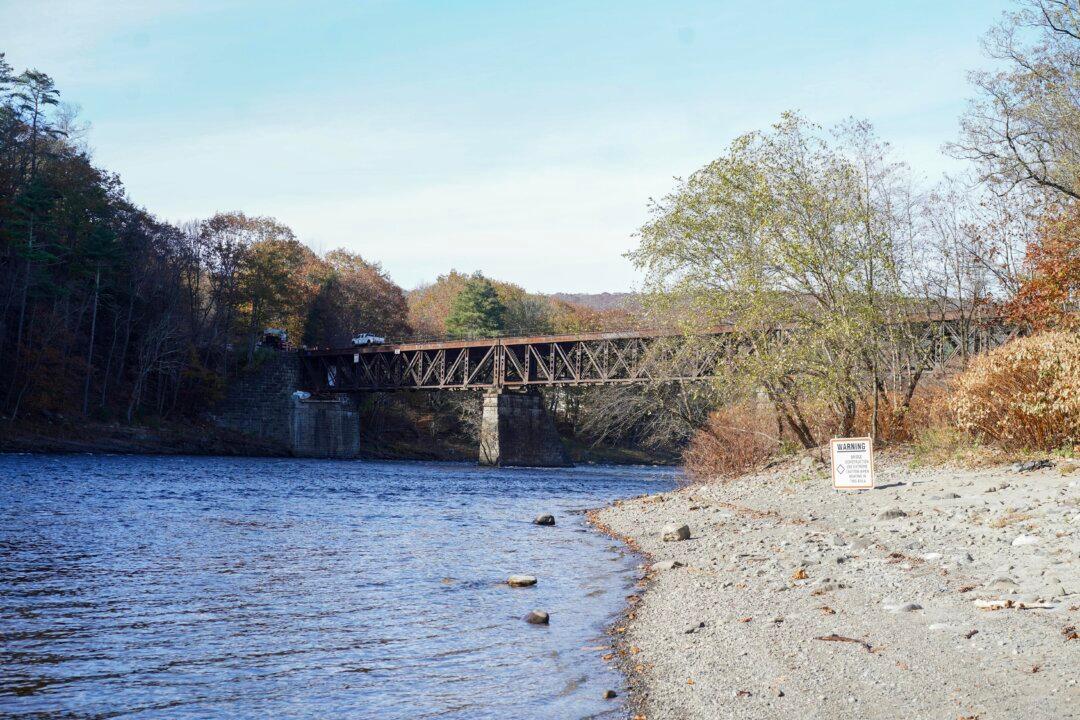A spell of dry weather this fall has contributed to significant movements in the salt line of the Delaware River, which runs through Wilmington, Delaware; Camden, New Jersey; Philadelphia; and other cities and towns on the East Coast.
This shifting poses a danger to clean drinking water and to the integrity of infrastructure, a spokesperson for the Delaware River Basin Commission has told The Epoch Times.
The salt line, also referred to as the salt front, is the point in the river where freshwater mingles with saltwater at a density high enough for the resulting water to be undrinkable without processing.
The salinized water can also pose a danger to buildings because of its corrosive qualities, according to Kate Schmidt, a spokeswoman for the commission.
Schmidt noted that the salt front has moved 19 miles upstream from its usual position. In recent months, her agency has exercised its authority to request water releases from reservoirs in Pennsylvania in an effort to boost freshwater levels around Trenton, New Jersey, about 30 miles northeast of Philadelphia.
“Normally, the salt front is located around Wilmington, but as the Philadelphia Inquirer reported recently, it is currently well upstream of that location,“ she said. ”As of Nov. 26, the salt front is located just south of the Philadelphia airport.”
The salt line is now also a mere 21 miles downstream from critical drinking water intakes serving New Jersey and Pennsylvania, according to Schmidt.
A lack of precipitation is among the causes, she said. Because of low rainfall, less freshwater has entered the river to exert a counterforce to a salt front driven upstream by powerful ocean tides, according to Schmidt.
According to Amy Shallcross, manager of water resource operations at the commission, it will take roughly one inch of rain per week over multiple weeks to move the salt front back to where it typically lies at this time of year.
If dry weather persists in the coming months, swift action to block the salt front encroachment—including more water releases—will be critical, Schmidt said.
“There is no immediate concern that the salt front will move upstream to the location where it would directly impact drinking water intakes,“ she said. ”But if these dry conditions continue, more freshwater will need to be released.”
Schmidt said she and her colleagues are concerned about what might happen, partly because it’s impossible to predict what the salt line will do. Her agency has taken steps toward protecting freshwater, including the construction of the Merrill Creek Reservoir in Harmony Township, New Jersey, in 1988, and more recently, an aggressive conservation program, she said.
The 650-acre Merrill Creek Reservoir can store 15 billion gallons of water.
Precipitation in the region has fluctuated significantly. As recently as February, concerns in the region centered on an unusually high level of rainfall.







